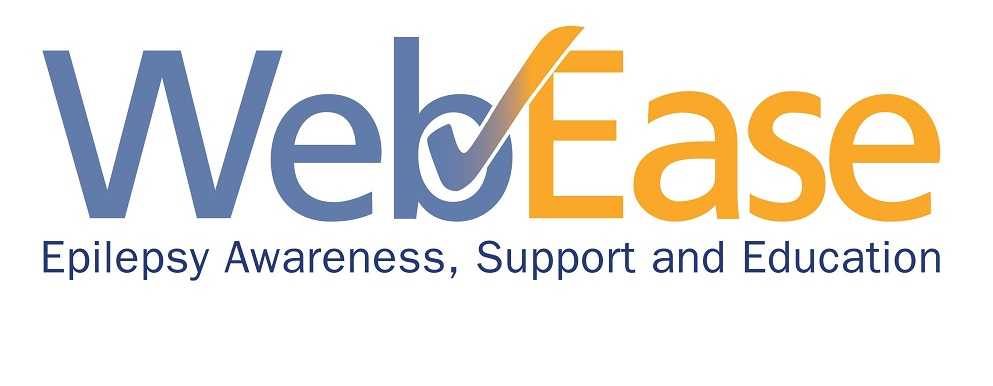Prevention Research Centers: 30 Years of Building Healthier Communities
Web Stories
 1991
1991
CATCH Targets Childhood Obesity
The University of Texas PRC worked with a community to create CATCH —the Coordinated Approach To Child Health. This elementary school program continues to produce diet and physical activity improvements that remain into early adolescence. CATCH has been adopted by more than 10,000 schools and communities in the United States and abroad, and its success sparked Texas state legislation requiring coordinated school health programs. Over 130 peer-reviewed scientific publications support the effectiveness of CATCH in increasing physical activity and healthy eating and reducing overweight and obesity.
 1994
1994
Enhance®Fitness Increases Physical Activity for Older Adults
Enhance®Fitness, developed by the University of Washington PRC, enhances physical and psychological functioning in older adults. It is one of five proven physical activity programs that CDC’s Arthritis Program recommends to improve the quality of life for people with arthritis. Through the years, Enhance®Fitness has grown to include over 60,000 participants and is now offered at more than 600 locations in 39 states.
 1999
1999
PEARLS Reduces Depression among Epilepsy Patients
PEARLS (Program to Encourage Active, Rewarding Lives) is an effective home-based depression treatment program for adults with epilepsy. Developed by the University of Washington PRC, it is delivered by a trained counselor in the client's home in eight sessions. The participant learns how to address issues that contribute to depression, such as social isolation and lack of physical activity. Adults with epilepsy who participate in the PEARLS program are less depressed and have fewer suicidal thoughts than those not participating over 12 to 18 months. Also available online, it is listed in a SAMHSA national registry of evidence-based programs. PEARLS has been implemented in 18 states.
 2004
2004
5-2-1-0 Message Combat Childhood Obesity
Harvard University PRC’s Maine Youth Overweight Collaborative trained medical providers to monitor and counsel overweight children and families. The PRC created the slogan “5-2-1-0,” which contains four messages:
- 5 or more fruits and vegetables
- 2 hours or less of screen time
- 1 hour or more of physical activity
- 0 sugary drinks
The program is recognized by the National Initiative for Children’s Healthcare Quality. Overall, 31 primary care sites serving one-third of Maine’s children were trained in 5-2-1-0 counseling and receive technical support. Over 25 states have used the 5-2-1-0 slogan.
 2006
2006
Project Decreases Depression
Project UPLIFT combines cognitive-behavioral therapy and mindfulness training to help people with epilepsy reduce depression and manage symptoms. The Emory University PRC studied the effectiveness of the program and found that participants’ depression symptoms decreased while their knowledge and skills increased significantly after completing the program. With funding from the National Institutes of Health, Project UPLIFT was modified into a depression prevention intervention for epilepsy patients. A multisite evaluation across the MEW Network showed that the modified program was effective among people with mild depression and epilepsy.
 2007
2007
Act Increases Access to Nutrition Information
In 2000, the Maine Bureau of Health and the Maine Center for Public Health joined with Harvard University PRC to create a new center focusing on the statewide problem of childhood obesity. Research results informed a statewide ban in 2007 on advertising of unhealthy snacks on school property. The statewide ban was signed into law June 15, 2009. The Harvard University PRC later sponsored statewide conferences that prompted requiring calorie labeling on menus of chain restaurants (20 or more establishments).
 2007
2007
PRCs Research Leads to Beer Keg Registration Law
The University of Iowa PRC contributed information that supported changes statewide in beer keg registration, and a state beer keg registration law was enacted in 2007. As a result, a registered keg found at an event where minors are drinking can now be traced to the person who purchased it and penalties imposed. Researchers and their advisory board provided technical assistance in 27 counties based on research related to youth drinking in the state.
 2008
2008
PRC Studies the Health Needs of Deaf Americans
Deaf and hearing researchers and community members from the University of Rochester PRC created the Deaf Health Survey, a video-based survey of health risk behaviors among deaf adults who use American Sign Language. Because national health surveys are not conducted in sign language, little is known about the health risk behaviors of deaf adults. The survey produced the first health surveillance data from deaf adults in Rochester, New York. The partners changed the survey technology so that deaf people can regularly participate in surveys to help provide information for effective health promotion strategies.
 2009
2009
Tulane Increases Access to Health Foods
The Tulane University PRC coordinated a study group and prepared a report that made recommendations for a program to provide grants and loans to supermarkets, farmers’ markets, and food retailers to make fresh fruits and vegetables available in low-income communities. This report informed the Louisiana Healthy Food Retail Financing Program, enacted in 2009.
 2009
2009
Improving Epilepsy Patient Self-Management
MINDSET (Management Information & Decision Support Epilepsy Tool) is a clinic-based computer program designed to improve epilepsy self-management communication between patients and their health care providers. Based on the patient’s symptoms with epilepsy, behavior, and attitudes, the program provides the patient and provider with information about the patient’s self-management needs and goals, recommendations on important discussion points for clinic visits, and suggestions for a patient self-management ‘action plan’ after clinic visits. The University of Texas Health Science Center at Houston is studying of its effectiveness and adapting the program into Spanish in Arizona and Texas.
 2010
2010
PRC Publishes Guide to Help Teen Development
Johns Hopkins University PRC wrote and released The Teen Years Explained in 2010. This guide described mental development throughout the teen years and how it influences risk assessment, sexual behavior, identity formation, and other aspects of growth. More than 11,000 copies of the book are in use, and over 550 people have been trained to use the book.
 2010
2010
PACES Improves Epilepsy Self-Management
The Program for Active Consumer Engagement in Self-Management (PACES), developed at the University of Washington PRC, is an epilepsy self-management program that is tailored for individual needs (such as concerns about stress, mood, memory, and information processing). The 8-week program for urban adults includes in-person sessions with a trained professional and a peer who has epilepsy. A study found that after 6 months, adults with epilepsy showed improvements in their understanding of their condition and their ability to manage medication side effects like fatigue. Researchers are adapting PACES for use with rural adults.
 2010
2010
Middle School Program Helps Teens Delay Sexual Behavior
The University of Texas PRC developed It’s Your Game…Keep it Real, a classroom and computer-based sex education program for middle school students. The curriculum is intended to prevent teen pregnancy and sexually transmitted diseases. In 2010, the National Campaign to Prevent Teen and Unplanned Pregnancy included It’s Your Game in a list of effective programs, and it is one of 36 teen pregnancy prevention programs eligible for federal funds.
 2010
2010
Telemedicine Increases Diabetic Eye Exams
The Oregon Health and Science University PRC found that diabetic retinopathy is common among American Indians or Alaska Natives in Pacific Northwest communities because of poor access to eye doctors. A telemedicine approach developed increased the number of diabetic patients who completed annual eye exams from 56% through the traditional method to 94% through telemedicine. This approach is now the foundation for comparing the effectiveness of two approaches:
• Digital transfer - annual eye exams using a camera in tribal health clinics, where data are transferred digitally to an eye clinic (telemedicine)
• Traditional methods - in an eye doctor’s office with an exam to detect diabetic retinopathy.
 2011
2011
Research Helps HIV-Infected Mothers
Research conducted through the University of North Carolina PRC found that giving antiretroviral drugs to breastfeeding mothers with HIV in sub-Saharan Africa, or giving an HIV-fighting syrup to their babies, are both effective. Partly on the basis of these results, the World Health Organization recommended that for breastfeeding mothers with HIV who are still in the early stages of infection, the HIV prevention guidelines be modified to offer them a choice of approaches. The study, published in the New England Journal of Medicine, received the 2011 Charles C. Shepard Science Award.
 2011
2011
PRC Prevents Eye Injuries among Citrus Harvesters
Using a community health worker model, the University of South Florida PRC improved the use of protective eyewear among citrus harvesters. Researchers trained full-time citrus workers to share eye safety information with other citrus workers and encourage workers to wear safety glasses. Workers who had 1 to 2 years of experience and who received help from a peer worker were more likely to use safety glasses than were other citrus workers. This model may be useful to injury prevention in similar agricultural settings.
 2012
2012
Harvard Fights Out of School Nutrition
Based on data collected from 2010-2011, Harvard University PRC researchers found that after-school programs that use the Out of School Nutrition and Physical Activity Initiative (OSNAP), can increase children’s access to drinking water during snack time. The PRC developed OSNAP to help programs that care for children outside of school improve nutrition and physical activity environments, policies, and practices. Researchers believe this study was the first group randomized control trial of a strategy to increase the amount of water served in after-school programs.
 2012
2012
WebEase Online Program Promotes Epilepsy Self-Management
Emory University PRC developed WebEase, an online program designed to promote self-management among adults with epilepsy. Interacting with WebEase, users can learn, adjust, or reinforce self-management skills related to medication, stress, and sleep management. Results from a study showed that participation in and completion of WebEase improved self-efficacy and medication taking. Researchers are working to develop a WebEase mobile app and adapt WebEase into Spanish.
 2013
2013
PRC Studies Community-based Prevention of Noise-Induced Hearing Loss
The Oregon Health and Science University PRC evaluated the effectiveness of four noise-induced hearing loss prevention programs with primary school students in a tribal community. In 53 fourth-grade classrooms, 95% of students were reported to be at risk for noise-induced hearing loss. While all of the programs were effective, the more effective programs were the interactive programs, such as the two Dangerous Decibels® programs in classrooms. The average improvement across all student survey questions was almost 20% for classroom programs.
 2013
2013
Video Improves Completion of HPV Vaccine Series
To prevent cervical cancer, the University of Kentucky PRC developed the “1-2-3 Pap” educational video to encourage Appalachian women to complete the human papillomavirus (HPV) vaccine series. The 3-dose series is a primary strategy to prevent cervical cancer. The women who watched the DVD were more than twice as likely to complete the series as the women who received standard care. The video has been adopted by 18 local health departments in Kentucky reaching 41 counties and has also been adapted for use in North Carolina and West Virginia. The West Virginia version was widely distributed by the West Virginia Immunization Network.
- Page last reviewed: March 30, 2017
- Page last updated: March 30, 2017
- Content source:


 ShareCompartir
ShareCompartir